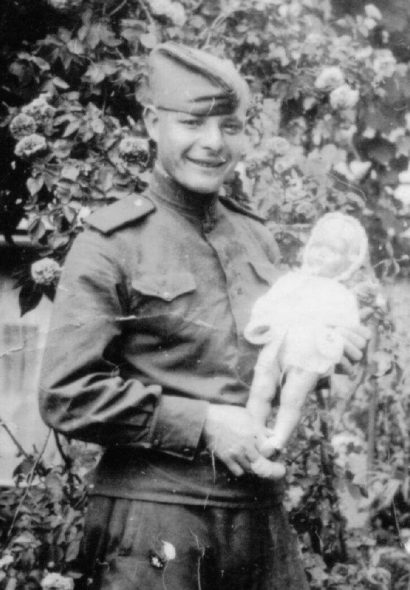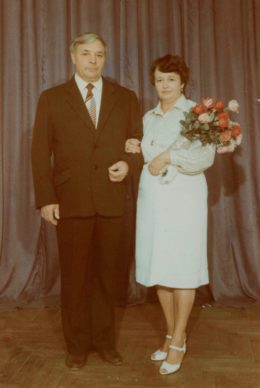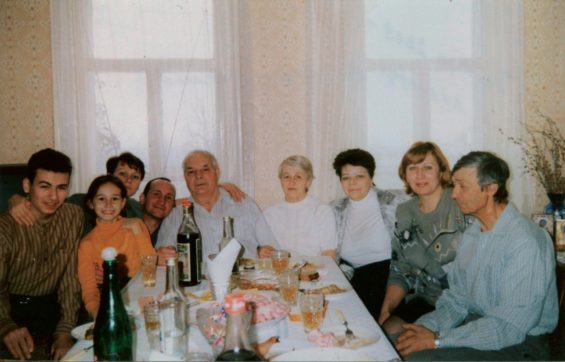Leonid Gavriilovich Dryamov
born December 24, 1924
![]()
Leonid Gavriilovich Dryamov, Rohrbach (Austria) 1946, detail, (private collection)
A Civilian from Stalingrad
Leonid Gavriilovich Dryamov grew up in Stalingrad. His family’s home was destroyed in the infamous siege of 1942. 17-year-old Leonid worked as a civilian volunteer at the Volga, carrying water and helping ferry the injured across the river. He and his group were captured by German soldiers.
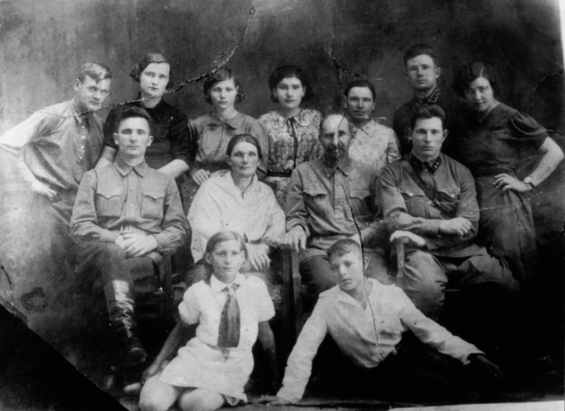
Leonid Gavriilovich Dryamov (bottom right) at age 14, with his family, Stalingrad 1940 (private collection)
The Gestapo deported Leonid to the Gross-Rosen concentration camp. When the Red Army began to advance, the camp was evacuated. In February 1945, he was transported by rail to Flossenbürg. Conditions on the overcrowded train were extremely poor, and many prisoners died on route or soon after arrival at Flossenbürg. In March, he was transferred to the Ansbach subcamp, where he worked as a forced laborer repairing bomb damage to the tracks at the central railway station. Despite the catastrophic conditions, Leonid Dryamov managed to survive. In early April, the camp was evacuated and he was returned to the main Flossenbürg camp. After liberation, he was transferred by the Americans to a hospital for treatment of typhoid.
After his recovery, Leonid Dryamov arrived at the Soviet Occupied Zone in Austria. He was in a transit camp for returnees when the Red Army drafted him into service. In 1949, after an absence of seven years, he finally arrived back in Stalingrad. He worked as an engineer in a steel company, married, and had a family.
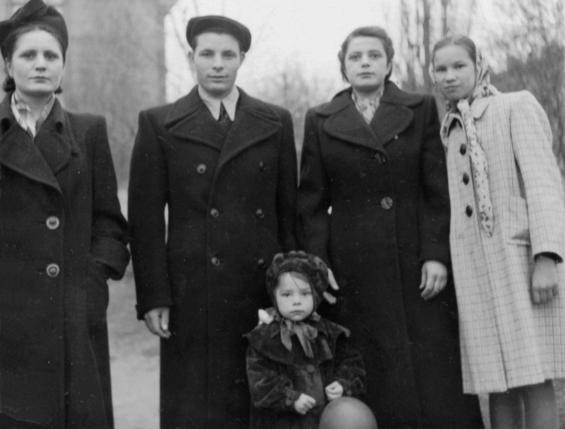
Leonid Gavriilovich Dryamov with his wife Antonia (left), his daughter Olja, his sister Nina (second from right) and his niece (right), Stalingrad 1953 (private collection)
![]()
Leonid Gavriilovich Dryamov with his second wife on the day of their civil wedding ceremony, Volgograd 1983 (private collection)
![]()
Leonid Gavriilovich Dryamov (center) on his 77th birthday with his family, Volgograd 2001 (private collection)
